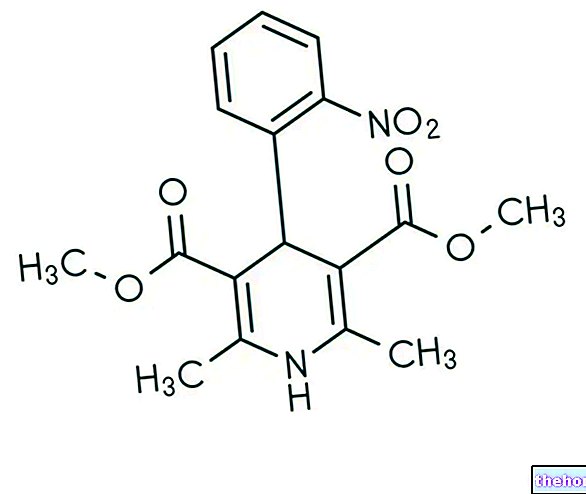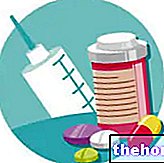Definition
Osteomyelitis refers to a complex and serious bacterial infection involving bones and bone marrow: the disease can have a chronic or acute course, and begin at any time in life. Osteomyelitis is an infection that affects men in particular, and it is the most serious of all affecting the osteo-articular system.
Causes
Infection is mainly sustained by streptococcal and staphylococcal bacteria, albeit also Escherichia coli, Klebsiella and Pseudomonas can foment or cause harm.
- Risk factors: bacteremia, infectious foci, open fractures, surgery, deep trauma, tuberculosis, syphilis
Symptoms
Osteomyelitis begins with redness and swelling of the affected area, difficulty in moving the injured area, acute pain, fever and potential swelling. The formation of skin fistulas with emission of pus is possible. In some cases, osteomyelitis progresses completely asymptomatic.
- Complications: Bone shortening and skeletal deformities (in case of non-treatment)
Information on Osteomyelitis - Osteomyelitis Treatment Drugs is not intended to replace the direct relationship between health professional and patient. Always consult your doctor and / or specialist before taking Osteomyelitis - Osteomyelitis Treatment Drugs.
Medicines
Before listing the possible drugs useful for the treatment of osteomyelitis, it should be emphasized that immediate surgical intervention is essential for the prevention of the chronic form of the infection; moreover, before the arrival of help, it is good practice to wash the wound and medicate it, before covering it with sterilized gauze.
Since it is an "infection caused by bacteria," osteomyelitis must be treated with broad-spectrum antibacterial drugs where the bacterium has not yet been isolated with precision; after that, the treatment must be continued with targeted antibiotics, active against that pathogen.
The following are the classes of drugs most used in the therapy against osteomyelitis and some examples of pharmacological specialties; it is up to the doctor to choose the most suitable active ingredient and dosage for the patient, based on the severity of the disease, the state of health of the patient and his response to treatment:
Cephalosporins
- Cefazolin (eg Cefazolin GRP, Cefazil, Nefazol) belongs to the first generation cephalosporin class. Administer 1-2 g of drug every 6-8 hours; do not exceed 12 g per day. The duration of therapy is usually 4-6 weeks, depending on the nature and severity of the infection. Chronic osteomyelitis may require antibiotic therapy for 6 months.
- Cefuroxime (eg. Cefoprim, Tilexim, Zoref, Zinnat) the drug in question is a second generation cephalosporin, to be administered parenterally (intravenously) at a dose of 1.5 g every 8 hours. Approximately, continue dosing for 6 weeks. The chronic form of osteomyelitis may require an additional two months of therapy.
- Cefotaxime (eg. Cefotaxime, Aximad, Lirgosin): third generation cephalosporin, generally administered intravenously or intramuscularly at a dosage ranging from 1 to 2 grams every 6-8 hours. Do not exceed 2 g every 4 hours. The therapy for acute osteomyelitis should be continued for 4-6 weeks; the chronic form takes up to 6 months.
Lincosamides
- Clindamycin (eg. Dalacin-T, Clindamycin BIN, Zindaclin, Dalacin-C): the drug, derived from lincomycin, is generally taken at a dosage of 450-900 mg i.v., every 8 hours. When the patient has stabilized, oral administration of the drug is recommended, typically 450 mg every 6 hours. The duration of therapy usually does not exceed 4-6 weeks, but the chronic forms require more dilated times (1-2 months).
Amoebioids (nitroimidazoles)
- Metronidazole (eg Flagyl, Metronid, Deflamon) is recommended to take the drug at a dosage of 7.5 mg every 6 hours, intravenously. Continue therapy for 4-6 weeks (acute osteomyelitis) or 3-4 months (chronic form).
Quinolones
- Ofloxacin (eg. Exocin, Oflocin): belonging to the class of second generation quinolones, ofloxacin should be administered at a dose of 400 mg orally every 12 hours for 4-6 weeks (acute form) or 3-4 months (chronic form of osteomyelitis).
- Ciprofloxacin (eg. Ciprofloxac, Samper, Ciproxin, Kinox): for mild-medium forms of osteomyelitis, it is recommended to take the drug at a dosage of 500 mg orally or 400 mg intravenously 2 times a day (every 12 hours) for 4-6 weeks. For the severe form, take 750 mg orally every 12 hours or 400 mg i.v. every 8 hours for 4-6 weeks.
Glycopeptides
- Vancomycin (eg Zengac, Levovanox, Maxivanil): inject into a vein 15 mg / kg of drug (max. 1 gram) by slow infusion (1-2 hours) every 12 hours. The expected duration of therapy is 3 months. Prolong the drug treatment for a further 1-2 months in case of the chronic form of osteomyelitis.
Penicillins
- Nafcillin (eg Unipen) administer 2 grams of substance every 4 hours for 4-6 weeks, depending on the nature of the infection. When dealing with chronic osteomyelitis, extend the treatment for another 6 months.
Analgesics: analgesic drugs are not essential for healing osteomyelitis but certainly represent a valid help for the patient, in order to overcome the disease more easily and with less pain. In this sense, analgesics are essential.
- Naproxen (eg Aleve, Naprorex): it is recommended to take one capsule of 550 mg twice a day (every 12 hours, unless further medical indications), as needed.
- Ibuprofen (eg. Brufen, Kendo, Moment): take orally from 200 to 400 mg of active ingredient (tablets, effervescent sachets) every 4-6 hours, as needed. In some cases, the analgesic can be given intravenously (400 to 800 mg every 6 hours, as needed)
- Diclofenac (eg Fastum Painkiller, Flogofenac Retard, Momenlocaldol, Voltaren) is recommended to take the drug at a dosage of 50 mg orally, every 8 hours. In case of acute pain, start with 100 mg of the drug, then move on to 50 mg.
- Paracetamol or Acetaminophen (eg. Tachipirina) indicated in case of fever in the context of osteomyelitis. The drug is available in the form of tablets, effervescent sachets and syrup. It is recommended to take paracetamol at a dosage of 325-650 mg every 4-6 hours for 6-8 consecutive days, to bring down the fever.
Note:
- For diagnostic purposes, Scintinum (active ingredient: Besilesomab), a kit useful for preparing an injectable radioactive solution, is generally used to circumscribe and precisely identify the sites of infection and inflammation with suspected osteomyelitis in the limbs.
- In case of chronic disease and the impossibility of healing despite drugs, surgery based on the excision of the infected material is the only viable option in order to avoid the extremely dangerous complications of osteomyelitis.




























